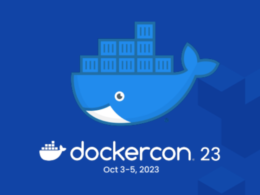In today’s digital world, the success of a business depends on the reliable operation of its key software systems and services. Any downtime or performance issues can lead to detrimental consequences, from lost revenue and potential customers redirected to competitors’ websites to decreased productivity for employees working against tight deadlines.
While keeping critical websites and applications up and running without incidents may seem like a daunting task for site reliability engineers (SREs) and DevOps professionals, there is good news. Generative AI, known for its intuitive Q&A interface, can enhance traditional observability methods and provide a multiplier effect in solving reliability, security, and speed challenges more efficiently and quickly.
Empowering On-Call Engineers with Conversational AI
A newly hired on-call engineer may lack the accumulated institutional knowledge necessary to understand all the systems within an organization and how they operate. In a scenario where the engineer receives an alert in the middle of the night regarding an unfamiliar system, generative AI can quickly bridge the knowledge gap. Through a conversation with an AI assistant, the engineer can ask questions like “What is the purpose of this system?” or “What other systems does this one connect to?” The large language model (LLM) underlying generative AI summarizes relevant contextual information in plain English, providing the engineer with the necessary insights to interpret their environment and troubleshoot errors effectively.
What sets generative AI apart is its ability to “converse” with engineers using natural language, eliminating the need for complex query languages or data structures. It enables engineers to seek answers in the same way they would approach a more experienced colleague, resulting in instant access to the information needed for problem-solving.
Proactive Summarization and Knowledge Accessibility
Generative AI goes beyond merely providing contextual information when requested; it can proactively summarize the context and deliver it to SREs. For instance, an on-call engineer can receive a comprehensive summary of an issue in their Slack channel, including all previous steps taken and the involved parties, even before being alerted. Instead of spending valuable time digesting the situation, the engineer can respond almost instantly. In these proactive summaries, LLMs can even outline the playbook used to address similar situations in the past. The engineer can then choose to follow the playbook or instruct the LLM to execute it directly. This assistance grants access to the organization’s entire knowledge base, enabling engineers to make effective decisions swiftly and resolve website or application issues efficiently, regardless of experience level.
Companies like T-Mobile Netherlands are already leveraging the power of generative AI to support their network operations team, network planning, and customer operations. This technology ensures greater network availability and speedy fault resolution for any network-related issues that arise.
The Future of Generative AI in Incident Response
The evolution of generative AI will progress towards automation. In the future, it will serve as an AI agent that can automate engineers’ responses to specific alerts. If the AI agent has witnessed recurring alerts or conditions and has confidence in the appropriate playbook, it will execute the necessary actions and provide a summary and confirmation to the engineer. This automation reduces the workload on SREs, alleviating the burden of sleepless nights and allowing them to focus on higher-level problem-solving.
Additionally, LLMs will increasingly integrate observability data with other systems within the organization, such as ERP, financials, or security. As these datasets merge, engineers will be able to ask more sophisticated and business-critical questions, going beyond incident-specific inquiries. They will gain insights into revenue impacts, operational effects on the supply chain, and more. This combination of generative AI and observability data revolutionizes the capabilities of observability professionals, providing them with an innovative tool to enhance their workflows.
In conclusion, generative AI is a gamechanger in the field of observability and incident response. It empowers engineers with conversational AI, facilitates proactive knowledge sharing, and paves the way for future automation. By leveraging the power of generative AI, SREs and DevOps professionals can optimize their workflows, make better decisions faster, and focus on strategic problem-solving.
“The combination of generative AI and observability data is more than a breakthrough — it’s a gamechanger.”
– Abhishek Singh, GM, Observability at Elastic










